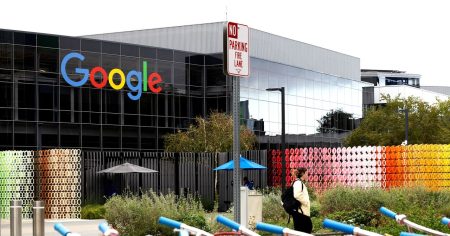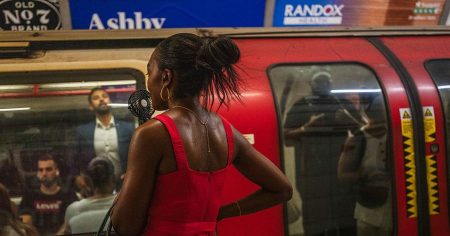Brian Mechem is President and Co-Founder of GRIN, a leading Creator Management Platform.
This past summer, a riot broke out in New York City. The NYPD had to activate a “Level 4” response (its highest level of disaster response), and the incident caught national news attention. At the center of the frenzy wasn’t a sporting event or political rally, but a content creator.
Kai Cenat, a social media creator known for streaming and doing comedy skits, held a giveaway for his followers that resulted in the riot. While the well-intentioned act turned disastrous, I think it also encapsulated creators’ impact in today’s world.
Content creators have emerged as individuals who can connect with millions of people through their online content. Their platforms have enabled them to engage with and influence their audience through similar goals, values and lifestyles. And that influence is why brands are turning to creators for advertising.
Creator-led advertising is gaining popularity.
Creator-led advertising has steadily grown in popularity over the past few years as one of the strongest tactics to reach a desired audience on social media. In fact, Forrester’s Q1 2023 B2C Marketing CMO Pulse Survey found that “nearly three-quarters of B2C decision-makers will partner with creators and influencers in 2023.” And for good reason.
According to Pew Research, 39% of social media users report that influencers or content creators impact their decisions about what to purchase. TikTok, in particular, has risen as an important social media platform for advertising. (Disclosure: My company is an API partner of TikTok’s.)
Creators’ influence on consumers can’t be denied, and brands are taking notice. According to TikTok, ads created for their platform with creator partnerships achieve 83% higher engagement rates. But partnering with creators on ads for TikTok has proven difficult for some brands to master.
Many brands’ approach to creator-led ad strategy has been ineffective.
With 54% of companies in one study planning to increase their marketing budgets this year, it’s clear that advertising remains essential to brands. But brands often try to make their ad strategies one-size-fits-all when working with creators, which doesn’t produce the results they want.
For instance, some brands use the same playbook with creators that they use with celebrity advertising, which consists of putting them in an extravagant ad campaign—complete with hair and makeup, costly sets and a professional studio. But just because this works with celebrities doesn’t mean it will with creators. If creators don’t appear in a way that’s familiar to their audience, it will feel disingenuous to them.
If brands want to appeal to a creator’s audience through ads, they need to take a different approach than they would for traditional advertising, especially on platforms like TikTok. Here are a few best practices for creator-led ad strategy on TikTok:
Shift creator-led ad strategy away from people who have already opted in to brand content.
Typically, brands produce social media content, such as videos and photos, for people who are inherently interested in that content. Think of the pages you follow on social media, such as friends and family, people you admire or even brands. You willingly opted into the content on your social feed; it’s what you want to see. Because of this, brands create ads already knowing what their audience wants and will tolerate from them. But this strategy doesn’t work for TikTok.
Most content that TikTok users consume doesn’t come from who they follow; it comes from the For You Page (FYP)—the first page users land on when they open the app, featuring a curated feed of videos from creators they might not follow. In other words, TikTok users mostly engage with content they haven’t opted into. Brands must shift their creator-led ad strategy to account for this.
To be successful on TikTok, brands should think of how to appeal to audiences who don’t know who they are. When working with creators on ads, instead of solely focusing on selling a product, brands should focus on introducing who they are to a new audience so that the audience has a better understanding of what they do, and so that the audience connects with them and will be more likely to engage with them.
For example, I noticed a clothing brand, which historically has been a men’s brand, used a mix of creators within their traditional target demo and whole new demographics to launch their women’s line this year.
Give creators autonomy when making ads.
Brand identity is paramount for standing out among competitors and building customer experience, which is why brands are particular about their identity in advertising. But in the pursuit of controlling their identity, they can alienate potential customers on TikTok.
As mentioned earlier, I’ve noticed some brands attempt to apply the same standard to creators’ ads that they would their in-house advertising, trying to maintain their visual appeal, quality and aesthetic. However, doing so often gives the creators’ audience cognitive dissonance because that’s not the content they expect from that creator, potentially turning them off of the ad altogether.
In my experience, the most successful way brands can use creators is to give them the autonomy to do what they do best. If a creator is known for get-ready-with-me or unboxing content, give them the flexibility and ownership to advertise within that niche. Don’t try to control the process because their audience won’t respond the same way as they do to their usual content.
Creator-led advertising is the future of advertising, and brands that want to capitalize on it need to approach it the right way. By creating ads that appeal to audiences that haven’t heard of their brand and giving creators the room to do what they do best, brands can maximize the impact of their creator-led strategy and successfully reach TikTok audiences.
Forbes Business Council is the foremost growth and networking organization for business owners and leaders. Do I qualify?
Read the full article here










